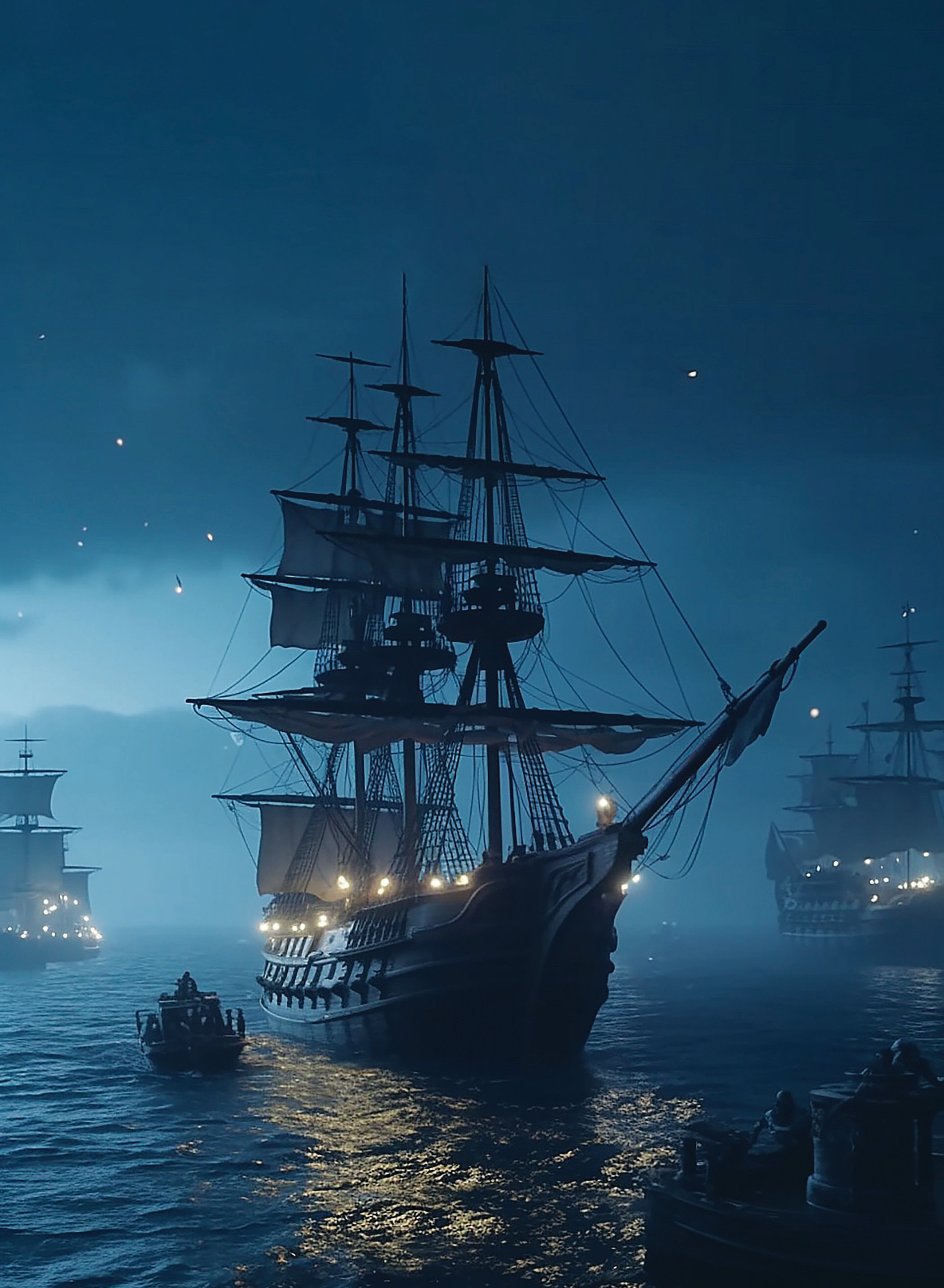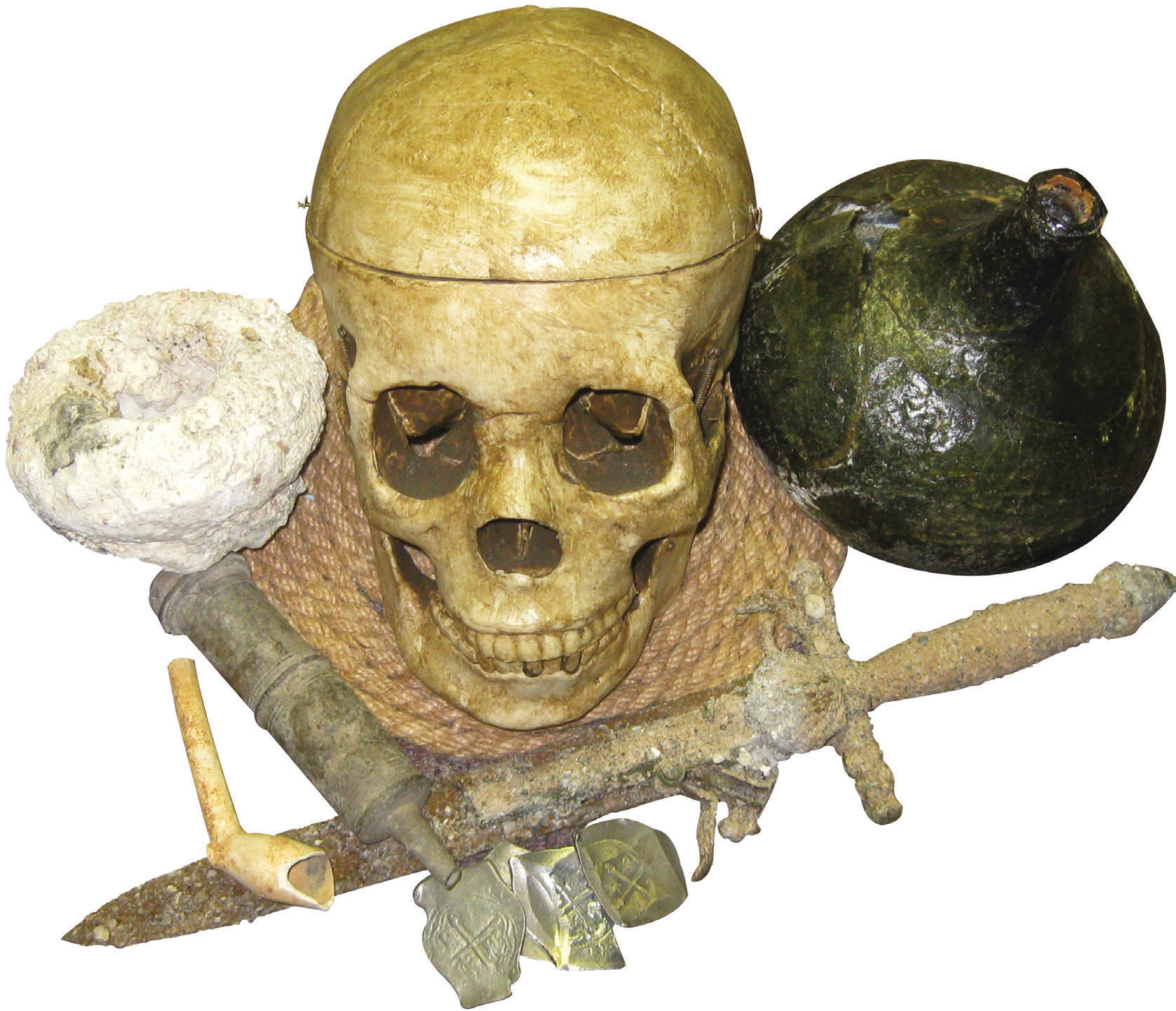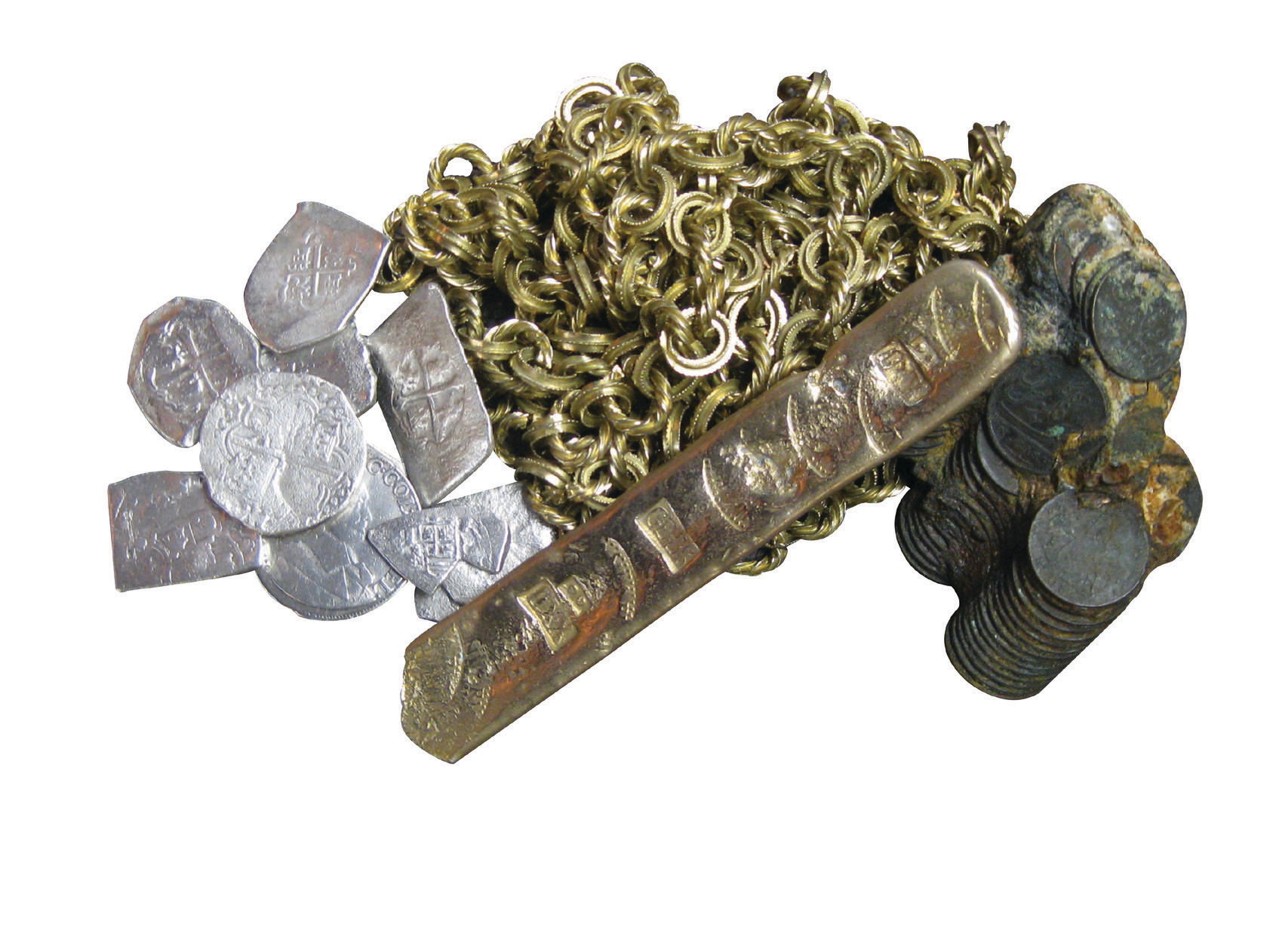Share
Featured Created by Rainy Sun Design Utilizing Artificial Intelligence.
Delaware’s rich history includes a seedy underbelly of piracy, plundering and maritime crime in the local waters.
It’s a moonless night in Delaware in the year 1717. Blackbird Creek is pitch-black, its banks overgrown and silent, save for the gentle lapping of the water on the shore. The men in the small draft boat are quiet, their eyes trained on the distant darkness. They’re a rugged group, leather-skinned and hard-muscled from harsh sun and manual labor, but their fingers and necks are laden with stolen jewelry. These are pirates, living during the Golden Age of their profession.
Finally, someone spots what they’re looking for: a faraway light, bobbing gently toward them—a ship. The pirates know that it’s brimming with merchandise bound for Philadelphia. In the inky darkness, they begin to row toward the larger ship without speaking a word. Soon, they’ll forcibly board the ship, kill some of its occupants and take all the loot they can carry. In a matter of minutes, they’ll retreat to their shallow boat and disappear back into Blackbird Creek as if they’d never existed.
One of these pirates, Edward Teach, is among the world’s most infamous, and his name has lingered in this area for centuries. According to professional shipwreck diver and maritime archaeologist Dale Clifton, on old maps, Blackbird, Delaware, is known by Teach’s more popular moniker: Blackbeard.

Piracy occurred at sea and on land in Delaware; the culprits left plenty of evidence behind, such as this clay pipe, a dagger with a built-in pistol and encrusted cob coins. Created by Rainy Sun Design Utilizing Artificial Intelligence.
The history of piracy in Delaware has been meticulously unearthed and researched by Clifton, who is also the owner and director of the DiscoverSea Shipwreck Museum in Fenwick.
“For me, shipwreck history and maritime history in general is important because it not only tells us how we got our beginnings along this coast, and why this area was so important back then, but because shipwrecks are like time capsules,” Clifton notes. “We can get a glimpse into what life was like hundreds of years ago, and by looking at what our forefathers went through, hopefully we can not only learn from that but open doors to the future.”
Clifton has thousands of artifacts on loan in museums all around the world, but one of his favorites comes from Delaware Bay. It’s a boarding sword, its hilt decorated with two three-leaf clovers, one of Blackbeard’s signature marks. This priceless piece of history is displayed at the DiscoverSea Shipwreck Museum, along with about 10% of Clifton’s massive collection, which he rotates annually.

Courtesy Dale Clifton
Blackbird isn’t the only area in Delaware named after a pirate, allegedly: According to Clifton, Kitts Hummock used to be known as Kidd’s Hammock—and it was named for the world-renowned Captain Kidd, if legends are to be believed. Plenty of famous pirates, such as Henry Avery, Captain Sam Bellamy and Henry Jennings all frequented this area, Clifton says. But why?
Delaware was a gritty area rife with crime in that time period, especially near the beaches. Miles of desolate coastline separated tiny settlements, leaving pirates with plenty of places to hide and set up camp. In addition, the militia wasn’t powerful here, as many Delaware residents were Quakers who refused to take up arms. To make matters worse (or better, if you’re a pirate), commerce in Philadelphia was thriving, and many ships had to pass by Delaware to sell goods there. But one of the main reasons Delaware was so popular for criminals was “The Wedge.”
Because of a variety of complications that arose when marking the borders of Delaware, Clifton explains, there remained a small slice of land—a “wedge”—that belonged to nobody, where Walter S. Carpenter State Park is now. This no-man’s land was untouchable by the law, and criminals flocked to the area to escape prosecution.
“We can get a glimpse into what life was like hundreds of years ago, and by looking at what our forefathers went through, hopefully we can not only learn from that but open doors to the future.”
—Dale Clifton
There were plenty of local pirates, too, Clifton says. Levy West was nicknamed Blueskin (later known as Bluebeard) due to his gunpowder-stained face and operated in this area; his father was a miller in Lewes. The Coleburn and Parker families lived here, as well as Charles Wilson, who left a letter detailing where he’d buried his treasure on Assateague Island—some of which is still undiscovered, Clifton notes.
Pirates also operated on land here. Patty Cannon, for example, owned a tavern in the 1800s built on the line between Delaware and Maryland. She would sell enslaved people, kill the plantation owners that bought them and pocket the money. When the sheriff from Delaware came to bring her to justice, Clifton says, Cannon would simply step into the Maryland side of the tavern, evading capture, and vice versa. For years, she eluded law enforcement in this way, until people from both states united to catch her.




